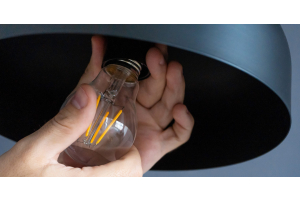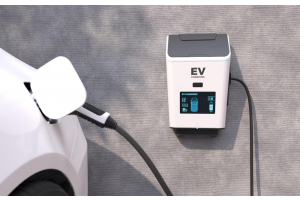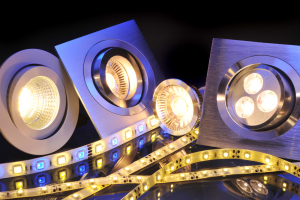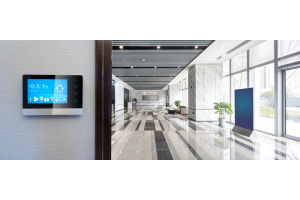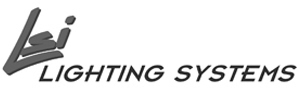lighting basics
-
- May 04, 2023
LED Basics: Everything you need to know about LED Lighting for your home and business.
LED is an acronym meaning ‘Light Emitting Diode’. This diode turns electrical energy into light, a diode is an electrical component that only works in one direction. It emits light when electricity flows through in one direction, from the Anode (positive side) to the Cathode (negative side). Due to this uni-directional system, LED Bulbs require less electricity to light and are much more energy efficient at producing more lumens compared to conventional light bulbs. LED lighting products produce light up to 90% more efficiently than incandescent light bulbs. LEDs typically do not “burn out” or fail. Instead, they experience ‘lumen depreciation’, wherein the brightness of the LED dims slowly over time. LED “lifetime” is established on a prediction of when the light output decreases by 30 percent. LEDs are “directional” light sources, which means they emit light in a specific direction, unlike incandescent
-
- November 10, 2022
Lighting Control Systems
There is no disputing that lighting technology has been advancing in leaps and bounds. The latest in LED lighting, for example, allows for greater operational capacities and more energy efficient lighting fixtures. As the technology behind the lights themselves advances, so too does their lighting control systems. Lighting control systems can generally be defined as any room or building based system that controls various building automation applications; such as room lighting, HVAC systems, security and motion sensors, and even window blind control. Since there is such a wide variety of applications for these systems, there are multiple different types of lighting control systems. Each of these systems have their own use case based on cost considerations, application, and brand compatibility. This short article will discuss each of the types of control systems and breakdown their advantages and disadvantages.
The biggest difference found in lighting control systems
-
- July 28, 2022
Decoding ANSI Codes
An ANSI code is a series of letters and/or numbers that can be found on High-Intensity Discharge (HID) and Halogen lamps and ballasts. While ANSI coded lamps are slowly being phased out in favor of LED systems, ANSI codes are still useful when matching HID lamps with ballast or vice versa. The ANSI code gets its name from the American National Standards Institute and is used across all industries to ensure uniform identification and performance among commercial products. Essentially, ANSI codes allow one to tell at a glance what the product is and its intended usage. This article will discuss all of the meanings of ANSI codes in lighting and why they are useful to consumers and manufacturers alike.
-
- May 30, 2022
Ceramic Metal Halide Lamps
Ceramic metal halide (CMH) lamps are a high-intensity discharge (HID) lamp similar to traditional metal halide lamps. Metal halide lamps use a combination of pressurized gasses, salts, and metals inside the glass bulb of the lamp to produce light. An electrical current is introduced by an arc tube within the lamp. An arc tube is the ignition source found at the center of all HID lamps. These use an electrical current to heat up and vaporize the materials inside the bulb; producing a wide range of ultraviolet (UV) wavelengths. This creates both visible light and UV radiation similar to that produced by the sun. For this reason, the bulbs of metal halide lamps are covered in a protective layer, known as luminaire, which allows only the desired wavelengths of light to escape. This broad spectrum of light is one of the desirable qualities of metal halide lamps, particularly CMH lamps. Unlike metal halide lamps which use an arc tube made of quartz, CMH lamps use ceramic arc tubes. This seemingly minor change in construction allows for ceramic arc tubes to reach higher operating temperatures than quartz ones. The higher temperatures allow for better efficiency, less maintenance, and a broader spectrum of light.
-
- May 17, 2022
Bulb Bases & Sockets: Everything You Need to Know
Much like with bulb shapes, the wide variety of bulb bases and sockets can be daunting if you don’t know what you’re looking for. Nobody wants to discover too late that they got a bulb that is slightly too large for the socket or has a different pin configuration. Luckily, each base and socket can be easily identified based on both their look as well as their use. This article will cover the most common bases and their compatible sockets. This includes screw bases and pin bases; including fluorescent and compact fluorescent bases. And just as with bulb shapes, each base can be identified using a code of letters and numbers designating the base type, diameter, and configuration. This code consists of a starting letter signifying the base type, followed by number(s) measuring its diameter in millimeters, and, if applicable, additional letters to note other characteristics. A common example is the E27 base, also known as the Medium base. The
-
- April 19, 2022
Bulb Shapes: Everything You Need to Know
There are many types and varieties of light bulbs, each with its own specific usage. Even just for household lighting, the wide range of bulb shapes can be daunting. Fortunately, the designations for bulb shapes are ordered alphabetically for easy identification. There is a bulb shape for nearly every letter in the alphabet, some being more prevalent than others. For the purposes of this article, however, we will only cover the most common styles and explain their best usages. In addition to describing the shape designations, this article will also explain how to tell the dimensions of the bulb as well as relevant variants of the bulb shapes.
-
- March 23, 2022
LED Tube Retrofits: The Benefits and Types
The Benefits of LED Tube Retrofits
As the technology of LEDs and their drivers have improved, lighting manufacturers have developed LED bulbs to replace older and less-efficient lighting types, known as LED retrofits. These days, LED retrofits can be found in all types of applications, from day-to-day residential and commercial lighting, to high-intensity outdoor and industrial lighting. The latter being where the endurance and consistent brightness of LEDs are crucial for safety. In nearly every setting, LED retrofits can be seen outperforming their counterparts in key aspects such as improved light-up time and longer lifespans.
-
- January 31, 2022
LED Driver Basics: Choosing the Right One for You
LED drivers act in a similar fashion to how a traditional electrical ballast works for a fluorescent lamp. LED drivers convert electrical power into the voltage and current needed for the LED system. The power sent to the LED is regulated by the driver, which increases the efficiency and overall lifetime of the LEDs.
-
- January 16, 2022
Electronic Ballast Starting Methods
A fluorescent light ballast converts the input voltage, typically 120 VAC to 480 VAC in North America, to the proper voltage needed to establish an arc between the two electrodes. A ballast can use various starting methods depending on the type of lamp and its application.
-
- April 06, 2020
Dimming Basics
There are various controllable lighting options that will dim your lights for ambiance or energy efficiency. Dimming lights 20% saves approximately 20% in energy savings. Controllable lighting solutions can be pretty simple for a single room or complex for total building lighting control. There are several components in a controllable lighting system: a dimmable lamp, dimming ballast, dimming control including dimmer and an optional sensor.
Most types of lighting technologies can be dimmed including incandescent, fluorescent, compact fluorescent, LED and halogen lamps. In some cases, there are both dimmable and non-dimmable versions of a lamp.

